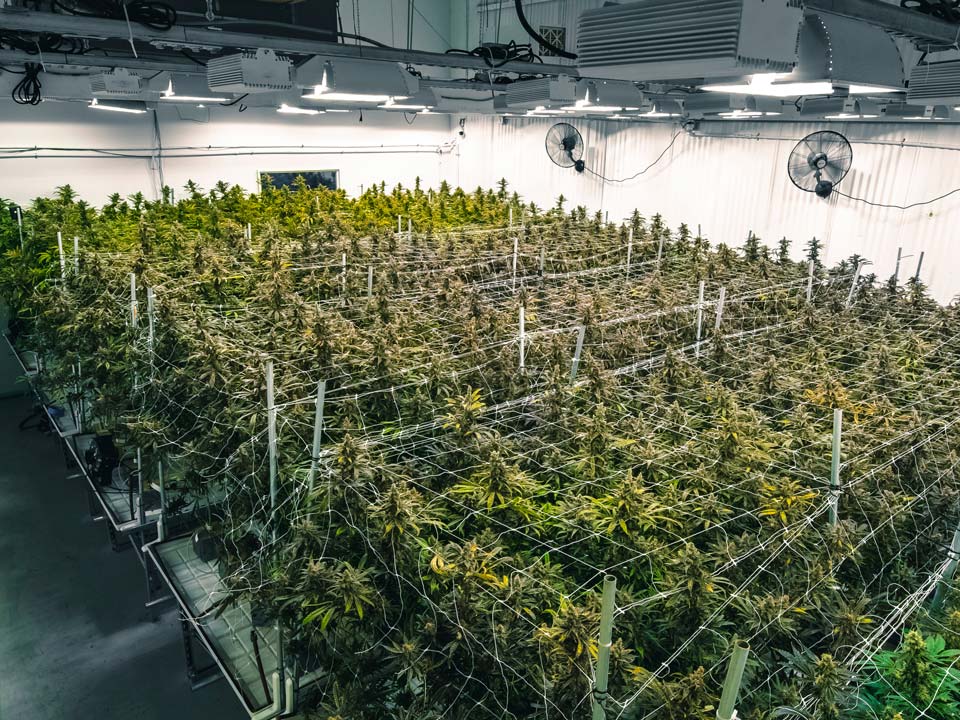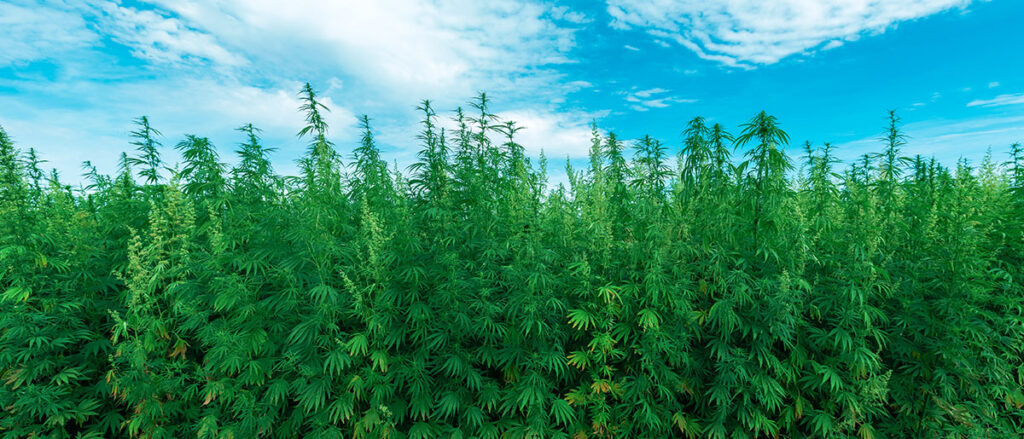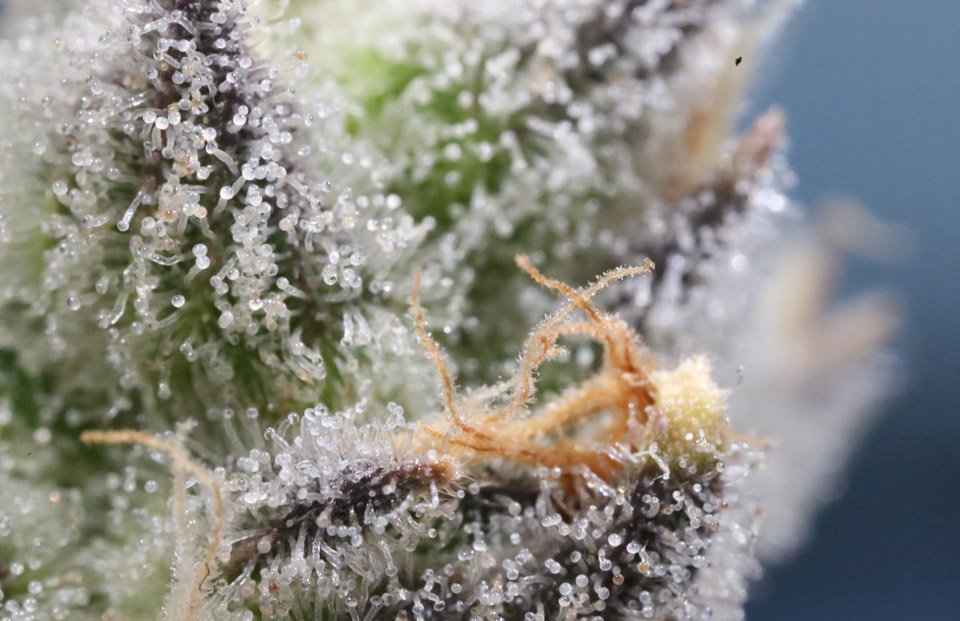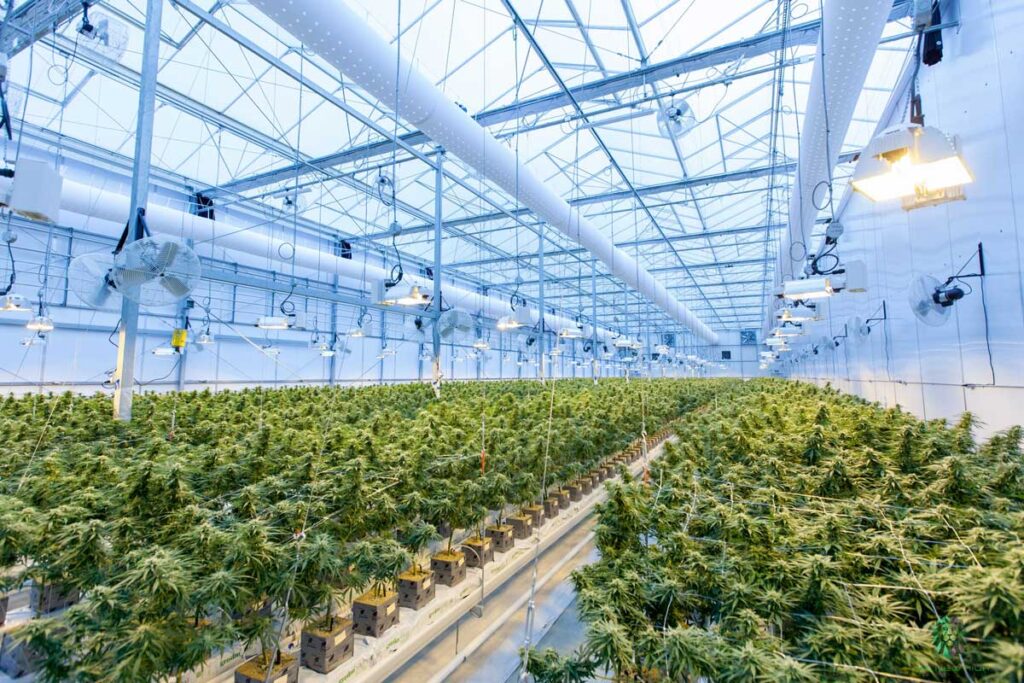When should you harvest cannabis plants? The answer depends on a lot of factors: your cultivar, climate, personal preference, staffing, equipment availability — the list goes on.
This article will provide you with all the latest information on when you should harvest cannabis plants. It’s not yet an exact science; you’ll hear loud debates about some aspects of harvesting, but the basics of how to get maximum THC from your cannabis are essentially the same.
The Goldilocks Rule applies when harvesting. As a cannabis grower, you’re looking for that sweet spot — not too soon and not too late. There could be a large opportunity cost associated with missing that sweet spot, where trichomes start to degrade and the quality of the flower isn’t as high.
Harvesting Cannabis Plants too Late
Throughout the reproductive phase of your crop cycle, cannabinoids increase — up to a point. After that point – the optimal harvest date – tetrahydrocannabinolic acid (THCA) begins to decompose. The cannabinoid that you’ve worked so hard to cultivate converts to less desirable compounds.
Oxidation, heat, and ultraviolet light convert THCA into its “degradation cannabinoid,” cannabinolic acid (CBNA). CBNA becomes CBN when it decarboxylates by losing a carbon atom. CBN has proven medicinal properties but little market value.
Pathogens can also creep up on an overdue crop. A mature cannabis bud has a massive surface area and deep crannies that can breed botrytis. If humidity is too high and botrytis sets in, your THC levels won’t matter — the crop will need remediation or disposal.

Harvesting Cannabis Plants too Soon
On the other hand, harvesting a cannabis plant early will cost you too. Trichomes, the crystalline resin glands found on cannabis buds and the surrounding leaves, won’t have time to mature to their chemical peak. You’ll be left with a harvest that’s high in cannabigerolic acid (CBGA). CBGA is the precursor cannabinoid to most other cannabinoids, including THCA.
If your cannabis crop tests high in CBGA, you probably harvested too early. The plants didn’t have time to metabolize the CBGA into THCA or CBDA. Sophisticated cultivators may use in-house chemical testing to determine when CBG levels have dropped, indicating peak THC levels.
While it’s true that CBGA has great potential as a medicine and there’s a strong market for CBG-rich hemp, cannabis connoisseurs are focused on THC, CBD, and terpenes — not the precursor cannabinoids found in the plant.
Factors that Affect Harvest Timing
The strain (cultivar) that you’re working with is the biggest factor for your harvest timing in terms of calendar days. Some cultivars, such as Early Girl, can be ready for harvest after just 49 days of flowering, while others take more than 100 days to mature (Hazes, Jack Herer). Your genetics supplier will give you an estimate for the cultivar’s crop cycle but remember: “your mileage may vary.”
A cannabis plant may take longer to flower if it has been stressed with pests, bad weather, or nutrient lockout. But the cultivar may surprise you with a quicker finish than what’s on the spec sheet, so don’t forget the importance of keeping a close eye on all aspects of growth.
Some growers may delay harvest day — and risk THC degradation — to maximize harvest weight. It’s true that plants continue to build biomass in the final days of flowering, but does this strategy work? It’s hard to say, and the results may be heavily cultivar-dependent.
The terpene profile of cannabis changes as the flowers mature and peaks a little later than THC. Growers who want more or different terpenes may delay their cannabis harvest, particularly if they’re immediately freezing the crop for fresh-frozen extraction or other applications.
Early Outdoor Harvests

Bad weather leads to brutal compromises in October. Outdoor cannabis plants can take a light freeze for two or three hours, but prolonged low temperatures or exposure to temperatures lower than 28℉ cause cellular ice crystals to form and trichomes to rupture.
Mold and pests may also necessitate early harvesting, and so too can wildfires. But sometimes, a suboptimal harvest is better than nothing at all.
How to Know When to Harvest Cannabis
Trichome Color
Bulbous trichomes (the mushroom-shaped resin glands that cover the cannabis flower) go through three visible stages on their way to maturity and eventual senescence: clear, cloudy, and amber.
The ideal trichome coloration is a matter of personal preference. Some growers prefer to harvest when 25% of the trichomes are amber, and the rest are milky or clear; others like to let the plant go a little longer and shoot for 50% amber/ 50% milky.
A 30-100X handheld microscope is the best choice for scoping out the trichomes on your plants, but a jeweler’s loupe or a cell phone magnifier works well enough. A DSLR camera with a macro lens is another great way to assess your trichomes while also documenting your harvests.
Generally, if there are a lot of amber trichomes on the plant, you can expect a sedative “body high” experience. If the trichomes are mostly cloudy, the effects are more cerebral.

Stigma/Pistil Color
The stigmas are the portion of the pistils that stick out from the bracts of the flower. You may recognize them as the little “hairs” sprouting from the plant that start out white and change colors as it matures. Most stigmas turn a reddish brown when they’ve matured, but you may also see orange, red, purple, pink, or even blue.
Regardless, when 75% of the stigmas have changed color, that’s a good sign it’s time to harvest. It’s not the only sign, but it’s a good reference, and stigma color is easy to see on the plant.
Leaf Color
When fan leaves turn yellow late into the flowering stage, it’s not a sign of nutritional deficiencies. It just means that the resources that were supporting photosynthesis have turned completely toward reproductive growth. The plant knows the season is ending, and it’s trying to produce seeds.
When the fan leaves turn yellow and fall, harvest day is very near. If you’re using fertilizer, however, you may not observe yellowing leaves at harvest time.
Calendar Date
The season dictates biology for outdoor plants. If you are an outdoor cannabis grower, year-to-year weather variations may impact schedules. But in general, Northern California growers will harvest in late October or early November. Washington State and Colorado growers harvest sooner — in mid-October — due to wet weather and cold temperatures, respectively.
Chemical Testing
When CBGA levels reach zero, THC content is at its zenith. Laboratory testing can tell you when it’s time to harvest better than any other method of assessment. However, most cultivators can’t spring for daily lab testing in the final week of the flowering stage.
Small cannabis testing units cost a few thousand dollars, but for commercial growers, they can pay off almost immediately. A potency bump from 17% to 19% yields a notable increase in market value. This type of data-driven decision-making will soon become the industry standard.
It’s Harvest Time

When you make it to harvest time, ensure that your staff is ready, the weather is ideal, and your trimming machine is ready to go. You’ll want to pre-determine if you will be wet trimming or dry trimming.
Remember to be gentle during cannabis harvesting, as the flower will lose potency with each time it’s handled. Trichomes can rupture all too easily, reducing your THC and terpene levels in the final product.
There are many factors that go into cannabis cultivation and harvesting. Knowing how to examine your cannabis plants to determine if they’re ready will help to maximize your harvest and profits. Contact Triminator to learn more about post-harvest equipment and how to make the most of your crop.